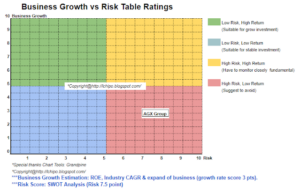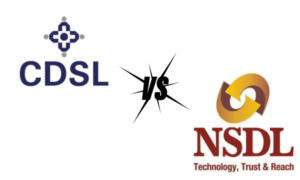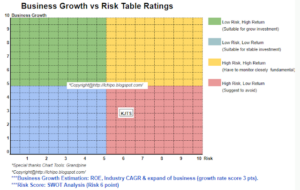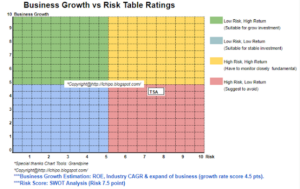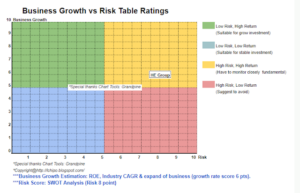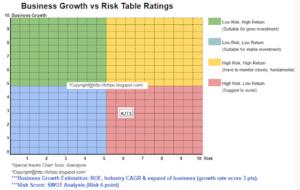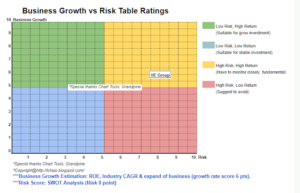In December 2015, Killara Resources, an
unsuccessful Indonesian coal mining company announced they would be relisting on
the ASX as the online real estate sales company Buy My Place. The backdoor
listing involved an offer of up to 25,000,000 shares at a price of 0.20 each to
raise $5,000,000.
unsuccessful Indonesian coal mining company announced they would be relisting on
the ASX as the online real estate sales company Buy My Place. The backdoor
listing involved an offer of up to 25,000,000 shares at a price of 0.20 each to
raise $5,000,000.
Unlike some of the more speculative
backdoor listings that the ASX is known for, Buy My Place was an actual
established business. Launched in 2009, Buy My Place let Australians sell their
house cheaply without spending thousands on real estate commissions. For a low
fixed cost, they gave you an ad on Domain and the other major property sites,
photographed your property, and sent you a billboard for the front of your
house. It was a simple model, designed to demonstrate just how overpaid real
estate agents are in an age of inflated house prices and increased reliance on
online research.
backdoor listings that the ASX is known for, Buy My Place was an actual
established business. Launched in 2009, Buy My Place let Australians sell their
house cheaply without spending thousands on real estate commissions. For a low
fixed cost, they gave you an ad on Domain and the other major property sites,
photographed your property, and sent you a billboard for the front of your
house. It was a simple model, designed to demonstrate just how overpaid real
estate agents are in an age of inflated house prices and increased reliance on
online research.
BMP re-listed on the ASX on the 15th
of March 2016 at a Market capitalisation of just over $11 million, roughly 11.5
times their pre-IPO annual revenue. In the January – March quarter the company
achieved revenue of $288,000, and by the July-September quarter this had grown
to $514,000. Not long after that, the share price hit a high of $0.44 on the 28th
of October 2016, a 120% return on investment for IPO investors in just over seven months.
of March 2016 at a Market capitalisation of just over $11 million, roughly 11.5
times their pre-IPO annual revenue. In the January – March quarter the company
achieved revenue of $288,000, and by the July-September quarter this had grown
to $514,000. Not long after that, the share price hit a high of $0.44 on the 28th
of October 2016, a 120% return on investment for IPO investors in just over seven months.
While investors didn’t know it at the
time, 44 cents was as good as it got. Over the next few months the share price
dropped steadily, reaching an all-time low of 15 cents in July 2017. There was
no defining moment that can explain this slump in price. Throughout this period
updates from the company continued to be positive, promoting record cash-flow numbers with nearly every quarterly report. Reading back through the company announcements,
there is nothing to suggest that this is a company losing 65% of its value.
time, 44 cents was as good as it got. Over the next few months the share price
dropped steadily, reaching an all-time low of 15 cents in July 2017. There was
no defining moment that can explain this slump in price. Throughout this period
updates from the company continued to be positive, promoting record cash-flow numbers with nearly every quarterly report. Reading back through the company announcements,
there is nothing to suggest that this is a company losing 65% of its value.
It is only when you look at the
Prospectus in more detail though, do you get a sense of how Buy My Place has
failed to live up to its own expectations. While there were no forecasts in the
Prospectus, the three tranches of performance rights for senior Buy My Place
employees gives us an idea of what the company, and by extension shareholders,
were hoping for. The three tranches
vest if the company achieves 8,000 property listings, $10,000,000 in revenue or
EBITDA of $3 million in one financial year by July 2019. As it stands, these goals seem completely
out of reach. If you annualize their last quarter numbers, Buy My Place is on
track for annual listings of 1676, revenue of $3,668,000 and so far away from
profitability it’s probably not even worth discussing. Whether a 10x increase
in revenue over three years while retaining profitability was a realistic goal or
not, somehow it seemed that this became the standard the company has been judged against.
Prospectus in more detail though, do you get a sense of how Buy My Place has
failed to live up to its own expectations. While there were no forecasts in the
Prospectus, the three tranches of performance rights for senior Buy My Place
employees gives us an idea of what the company, and by extension shareholders,
were hoping for. The three tranches
vest if the company achieves 8,000 property listings, $10,000,000 in revenue or
EBITDA of $3 million in one financial year by July 2019. As it stands, these goals seem completely
out of reach. If you annualize their last quarter numbers, Buy My Place is on
track for annual listings of 1676, revenue of $3,668,000 and so far away from
profitability it’s probably not even worth discussing. Whether a 10x increase
in revenue over three years while retaining profitability was a realistic goal or
not, somehow it seemed that this became the standard the company has been judged against.
A slightly more charitable way to look
at Buy My Place’s lukewarm first couple of years on the ASX is that convincing
someone to sell their own home without a real estate agent is a harder
transition than both investors and the company initially realized. People may
resent the huge amounts of commission Real Estate Agents pick up with
relatively little work, but the step from resentment to taking the pressure of
selling a house on yourself is another matter entirely. In February 2017 the
company seemed to acknowledge this fact, and launched a full-service package,
where for a higher fee of $4,595 home sellers gain access to a licensed real
estate for advice, who also manages the whole process. This strategy seemed to
be part of a broader re-positioning that happened throughout 2017, where the
company sought to increase its revenue per client. In July, Buy My Place announced
the Acquisition of My Place conveyancing, an online conveyancing firm they had
referred business to in the past. A few months later in September Buy My Place
announced a partnership with FlexiGroup, allowing customers to finance both
Buy My Place fees and other costs associated with selling their property.
at Buy My Place’s lukewarm first couple of years on the ASX is that convincing
someone to sell their own home without a real estate agent is a harder
transition than both investors and the company initially realized. People may
resent the huge amounts of commission Real Estate Agents pick up with
relatively little work, but the step from resentment to taking the pressure of
selling a house on yourself is another matter entirely. In February 2017 the
company seemed to acknowledge this fact, and launched a full-service package,
where for a higher fee of $4,595 home sellers gain access to a licensed real
estate for advice, who also manages the whole process. This strategy seemed to
be part of a broader re-positioning that happened throughout 2017, where the
company sought to increase its revenue per client. In July, Buy My Place announced
the Acquisition of My Place conveyancing, an online conveyancing firm they had
referred business to in the past. A few months later in September Buy My Place
announced a partnership with FlexiGroup, allowing customers to finance both
Buy My Place fees and other costs associated with selling their property.
To cap off these changes, in October
Buy My Place announced the departure of Alan Heath and the appointment of Colin
Keating as CEO, a younger executive who had spent time at American Express and
more recently at an investment administration company. The new strategy seems
to have also involved a re-focus on revenue growth above all else. For the last
two quarters, revenue growth has increased to an impressive 20%+ per quarter,
but expenses have grown just as quickly.
Buy My Place announced the departure of Alan Heath and the appointment of Colin
Keating as CEO, a younger executive who had spent time at American Express and
more recently at an investment administration company. The new strategy seems
to have also involved a re-focus on revenue growth above all else. For the last
two quarters, revenue growth has increased to an impressive 20%+ per quarter,
but expenses have grown just as quickly.
Buy My Place – Quarterly cash flows since listing (thousands)
For a company running at this sort of
deficit, the obvious concern is how much runway they have before they will run
out of money. At the end of December, the company had $800,000 in cash, plus an
unsecured, zero interest credit facility with the investment/bankruptcy firm
Korda Mentha of $1,000,000. Given they are currently running at a deficit of
roughly $750,000 a quarter, it seems highly likely the company will need to go
through another capital raising round in the next six to twelve months.
deficit, the obvious concern is how much runway they have before they will run
out of money. At the end of December, the company had $800,000 in cash, plus an
unsecured, zero interest credit facility with the investment/bankruptcy firm
Korda Mentha of $1,000,000. Given they are currently running at a deficit of
roughly $750,000 a quarter, it seems highly likely the company will need to go
through another capital raising round in the next six to twelve months.
While normally the knowledge of an
impending capital raise is enough to make me lose interest pretty quickly, the
current share price seems close to the floor of any potential future equity
raise. In December 2017, Buy My Place raised $400,000 from sophisticated and
professional investors at a price of $0.16 each. In addition, the company
secured a zero interest credit facility with the finance firm Korda Mentha of
$1,000,000 in return for the issuance of 6,250,000 options with an excise price
of 16 cents. With this in mind, It is unlikely these investors (Korda Mentha is
also a major shareholder) will allow any future equity raise at less than $0.16
cents a share, given that announcements since then have generally been positive.
With shares currently trading around the $0.16 mark, future equity raises should be at or above this price.
impending capital raise is enough to make me lose interest pretty quickly, the
current share price seems close to the floor of any potential future equity
raise. In December 2017, Buy My Place raised $400,000 from sophisticated and
professional investors at a price of $0.16 each. In addition, the company
secured a zero interest credit facility with the finance firm Korda Mentha of
$1,000,000 in return for the issuance of 6,250,000 options with an excise price
of 16 cents. With this in mind, It is unlikely these investors (Korda Mentha is
also a major shareholder) will allow any future equity raise at less than $0.16
cents a share, given that announcements since then have generally been positive.
With shares currently trading around the $0.16 mark, future equity raises should be at or above this price.
The competition
Although there are a number of online sites
offering online house sale services in Australia, the elephant in the room in
any discussion of Buy My Place is Purple Bricks. The UK low cost real estate
agent expanded to Australia a couple of years ago, and with revenue of more
than double Buy My Place in Australia and a market capitalisation of over $900
million pounds internationally, they represent the biggest competition by a few
orders of magnitude. With this in mind, I thought it might be useful to compare
the two companies’ latest half year reports for Australia only.
offering online house sale services in Australia, the elephant in the room in
any discussion of Buy My Place is Purple Bricks. The UK low cost real estate
agent expanded to Australia a couple of years ago, and with revenue of more
than double Buy My Place in Australia and a market capitalisation of over $900
million pounds internationally, they represent the biggest competition by a few
orders of magnitude. With this in mind, I thought it might be useful to compare
the two companies’ latest half year reports for Australia only.
Buy My Place and Purple bricks H1FY18 (Millions)
| Purple Bricks | PB costs/revenue | Buy My Place | BMP costs/revenue | |
| Revenue | 6.8 | 1.57 | ||
| Cost of sales | -3.2 | 47% | -0.53 | 34% |
| Gross Profit | 3.6 | 53% | 1.04 | 66% |
| Administrative expenses | -3 | 44% | -2.97 | 189% |
| Sales and marketing | -5.7 | 84% | -0.87 | 55% |
| Operating loss | -5.1 | 75% | -2.80 | 178% |
The thing that immediately jumps out is
Buy My Place’s much higher administrative expenses as a percentage of revenue
compared to Purple Bricks. This can partially be explained by some one-off
costs Buy My Place had regarding the appointment of their new CEO and acquisition
of MyPlace Conveyancing, but it does look like these are costs that need to be
reined in. You would also expect this ratio to improve as Buy My Place’s revenue
grows. However, the overall picture suggests that these are two companies
operating in broadly similar ways. The fact that Purple Bricks has managed to
hit profitability with this model in the UK should be seen as a positive for
potential Buy My Place investors. Purple bricks entrance to the Australian
market should also help familiarise people with low cost real estate agent
options, opening up more potential customers for Buy My Place.
Buy My Place’s much higher administrative expenses as a percentage of revenue
compared to Purple Bricks. This can partially be explained by some one-off
costs Buy My Place had regarding the appointment of their new CEO and acquisition
of MyPlace Conveyancing, but it does look like these are costs that need to be
reined in. You would also expect this ratio to improve as Buy My Place’s revenue
grows. However, the overall picture suggests that these are two companies
operating in broadly similar ways. The fact that Purple Bricks has managed to
hit profitability with this model in the UK should be seen as a positive for
potential Buy My Place investors. Purple bricks entrance to the Australian
market should also help familiarise people with low cost real estate agent
options, opening up more potential customers for Buy My Place.
Valuation and Verdict
At its core, Buy My Place is an idea
that I really believe in. There is no reason for a Real Estate Agent to take in
tens of thousands of dollars in commission to sell a house, in an age where buyers
are increasingly comfortable doing their own research and the same handful of online sites are used by everyone when searching for a house.
that I really believe in. There is no reason for a Real Estate Agent to take in
tens of thousands of dollars in commission to sell a house, in an age where buyers
are increasingly comfortable doing their own research and the same handful of online sites are used by everyone when searching for a house.
With a market capitalization of just
under $10.8 million dollars at time of writing and annual revenue of $1.53
million as per their latest half year accounts, Buy My Place is currently trading
at 3.53 times annual revenue. For a company that has managed to sustain 20%+
quarterly growth for the last six months this seems like a pretty enticing
deal. While some of this can be chalked up to the Buy My Place’s rather
precarious cash position, it seems that at least part of the companies
relatively cheap price can be explained by the short attention span of the
market. Micro-cap investors are quick to move onto the new thing, and after
failing to live up to their initial hype, it seems many investors have simply lost
interest in Buy My Place.
under $10.8 million dollars at time of writing and annual revenue of $1.53
million as per their latest half year accounts, Buy My Place is currently trading
at 3.53 times annual revenue. For a company that has managed to sustain 20%+
quarterly growth for the last six months this seems like a pretty enticing
deal. While some of this can be chalked up to the Buy My Place’s rather
precarious cash position, it seems that at least part of the companies
relatively cheap price can be explained by the short attention span of the
market. Micro-cap investors are quick to move onto the new thing, and after
failing to live up to their initial hype, it seems many investors have simply lost
interest in Buy My Place.
I bought a relatively small investment
in Buy My Place at $0.155 cents each last week. I will be watching the coming 4C
closely due in just over a month’s time, and if they can start reducing their loses I will likely add to that position.
in Buy My Place at $0.155 cents each last week. I will be watching the coming 4C
closely due in just over a month’s time, and if they can start reducing their loses I will likely add to that position.
Source: http://theiporeview.blogspot.com/2018/03/buy-my-place.html
- access
- acquisition
- Ad
- advice
- agents
- Alan
- American
- American Express
- announced
- Announcements
- around
- Australia
- backdoor
- Biggest
- BP
- business
- buy
- capital
- Cash
- ceo
- Coal
- coming
- commission
- Companies
- company
- competition
- Costs
- Couple
- credit
- Current
- Customers
- deal
- detail
- dollars
- dropped
- elephant
- employees
- equity
- estate
- executive
- expenses
- Facility
- Fees
- finance
- financial
- Firm
- First
- future
- good
- Growth
- High
- Home
- hoping
- House
- How
- HTTPS
- huge
- idea
- impending
- Increase
- interest
- investment
- Investors
- involved
- IPO
- issuance
- IT
- July
- knowledge
- latest
- listing
- Listings
- Long
- major
- March
- mark
- Market
- Market Capitalization
- million
- Mining
- model
- money
- months
- move
- numbers
- offer
- offering
- online
- operating
- Options
- orders
- Other
- Partnership
- People
- performance
- picture
- pounds
- pressure
- price
- profitability
- property
- raise
- raises
- Reading
- real estate
- reliance
- report
- Reports
- research
- Resources
- revenue
- Run
- running
- sale
- sales
- sell
- Sellers
- sense
- Services
- Share
- shareholder
- Shares
- Short
- Simple
- Sites
- SIX
- small
- So
- Spending
- start
- Strategy
- time
- track
- Trading
- Uk
- Updates
- us
- value
- week
- WHO
- Work
- worth
- writing
- year
- years
- zero


